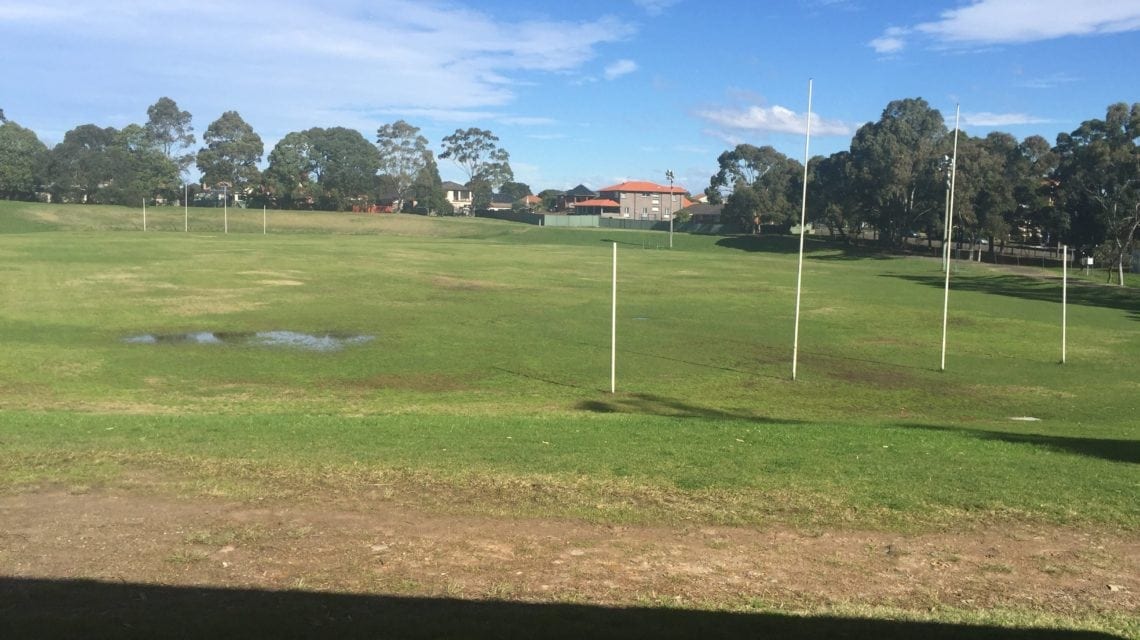Major cost savings can be made with a little extra ingenuity when it comes to managing your property developments, environmental approvals and waste soil.
Often when constructing a new building, removing underground storage tanks, building a new sports field or remediating contaminated soil the method has often been to get soil off site directly to landfill, then to purchase new soil for fill, landscaping, turf and other requirements.
With good soil science expertise, most soil can be redesigned or reused for beneficial purposes either on the property construction or in nearby developments. This can potentially save hundreds of thousands of dollars and delivers a much more sustainable approach.
iEnvi and partners think outside the box and always look for ways to minimise stress on our client’s pockets, while importantly maximise a more sustainable development approach to managing large development projects and contaminated site remediation.
iEnvi Principal Environmental Scientist Michael Nicholls managed two separate projects and linked waste to resource between the two. An example of this outside the box thinking is detailed below, where the outcome was a win for the environment and a win for the clients saving substantial soil management costs.
Case Study
With beneficial reuse innovation, the two projects saved approximately $77,500.00 and $1,002,300.00 respectively.
Innovation
The two projects included remediating “SITE A” (underground storage tank excavation) and “SITE B” (and AFL sports field redevelopment).
- SITE A – One underground storage tank (UST) and underground petroleum storage system (UPSS) removal, and tank pit sand removal project; and
- SITE B – One sports field upgrade (that happened to be on a former landfill).
The excavated tank pit sand from SITE A was contaminated with solvent hydrocarbons. During UST removal the contaminated sand was removed and remediated using biodegradable surfactants and soil bioremediation methods. The soil was then reused at SITE B to enhance the drainage performance of recovered soils into turf growth media at the sports field (landfill) redevelopment project.
Australia’s leading soil science consultancy SESL Australia Pty Ltd undertook a beneficial reuse survey and soil design for the sports field (SITE B). SESL designated which soil could be retained and separated for reuse during the sports field upgrade, and advised on what amendments were needed for the soil, including the use of remediated sand from SITE A.
EPA Approval
Even though soil was effectively remediated so that it was suitable for use in recreational fields, because it had been ‘processed’ by remediation methods, this triggered the requirement for a Specific Resource Recovery Order and Exemption for NSW EPA approval before reuse. The approval was successfully granted from NSW EPA for the beneficial reuse within the space of a few weeks.
Applying these core values of environmental sustainable development reflects the EPA’s hierarchy for waste management as part of the Resource Recovery Exemption Scheme:
- Recovering contaminated and turf growth media soil
- Recycling contaminated soil and soils through the process of land remediation and sportsfield refurbishment
- Reusing remediated soil for other development requirements and clean soil for specific soil design requirements
- Avoiding the need for quarrying virgin materials and transporting to SITE B
- Reducing contaminated waste and unwanted soil disposal from both sites

A Positive Result: $ and Environment
Cost savings:
- Site A savings: elimination of contaminated soil disposal costs versus cost of remediation and approvals provided an estimated net cost saving of $77,500.00.
- Site B savings: elimination of contaminated soil disposal and clean fill import costs versus cost of Site A soil reuse provided an estimated net cost saving of $1,002,300.00.
Environmental savings:
- Reduced waste to landfill by approximately 6,500 tonnes.
- Reduced quarrying by approximately 6,800 tonnes.
While there are some pre-approved beneficial reuse exemptions (waste exemptions), the NSW EPA will assess reuse options and disposal of material for all other cases on a case-by-case basis and an expert land consultant is a statutory requirement, and a similar process is available in other states. Contact the experts at iEnvi to guide your project through the multistep regulatory process from contamination to commercial advantage. We can provide resources from multiple teams, consultancies, universities and contractors to solve your environmental problems!
Contact us for innovative solutions at [email protected]
Or simply shoot us a question and follow us on social media to stay up to date with contaminated sites news that affects your business.
References
Leake, S. and Haege, E., (2014) Soils for Landscape Development: Selection, Specification and Validation. CSIRO Publishing, Collingwood VIC.
NSW EPA (2014) Best Practice Note: Landfarming, New South Wales Environmental Protection Authority.
NSW EPA (2014a) Protection of the Environment Operations (Waste) Regulation 2014, New South Wales Environmental Protection Authority.
NSW EPA (2014b) Waste Classification Guidelines Part 1: Classifying Waste, New South Wales Environmental Protection Authority.
NSW EPA (2014c) The Excavated Natural Materials Exemption, New South Wales Environmental Protection Authority.
NSW EPA (2014d) The Excavated Natural Materials Order, New South Wales Environmental Protection Authority.


